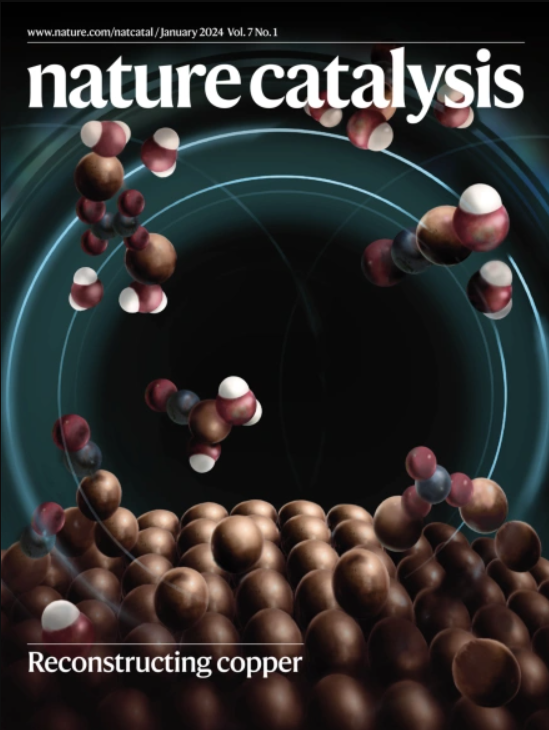电化学手性异硫脲催化对映选择性自由基α-烯醇化酯
IF 44.6
1区 化学
Q1 CHEMISTRY, PHYSICAL
引用次数: 0
摘要
羧基酯基序在生物、化学和材料科学中普遍存在,简单酯的不对称α-功能化在有机合成领域起着至关重要的作用。在这里,我们提出了一种通用的电驱动的不对称路易斯碱催化策略,用于简单酯与硅烯醇醚的氧化自由基交叉偶联。该方法将电化学阳极氧化过程与手性异硫脲催化相结合,使烯酸酯的亲核碳极性倒置,从而触发c1 -铵烯酸酯形成手性异硫脲结合的α-羰基自由基。不对称路易斯碱催化和电化学的结合开启了温和的氧化自由基偶联反应,实现了高达98%的对映体过剩,并展示了广泛的底物兼容性。这项工作强调了该方法的合成潜力,并为推进不对称电合成提供了一个平台。本文章由计算机程序翻译,如有差异,请以英文原文为准。


Enantioselective radical α-enolation of esters via electrochemical chiral isothiourea catalysis
Carboxylic ester motifs are prevalent in biological, chemical and materials sciences, and the asymmetric α-functionalization of simple esters plays a crucial role in the field of organic synthesis. Here we present a versatile electricity-driven asymmetric Lewis base catalysis strategy for the oxidative radical cross-coupling of simple esters with silyl enol ethers. This approach integrates the electrochemical anodic oxidation process with chiral isothiourea catalysis, enabling a polarity inversion at the nucleophilic carbon of the enolate to trigger the formation of a chiral isothiourea-bound α-carbonyl radical species from a C1-ammonium enolate. The combination of asymmetric Lewis base catalysis and electrochemistry unlocks mild oxidative radical coupling reactions, achieving up to 98% enantiomeric excess and demonstrating broad substrate compatibility. This work underscores the synthetic potential of the approach and provides a platform for advancing asymmetric electrosynthesis. Strategies for asymmetric control in electrosynthesis involving radicals are sought after. Now asymmetric Lewis base catalysis is combined with electrochemistry, enabling the oxidative radical cross-coupling of esters with silyl enol ethers and affording γ-keto esters in high enantiomeric excess.
求助全文
通过发布文献求助,成功后即可免费获取论文全文。
去求助
来源期刊

Nature Catalysis
Chemical Engineering-Bioengineering
CiteScore
52.10
自引率
1.10%
发文量
140
期刊介绍:
Nature Catalysis serves as a platform for researchers across chemistry and related fields, focusing on homogeneous catalysis, heterogeneous catalysis, and biocatalysts, encompassing both fundamental and applied studies. With a particular emphasis on advancing sustainable industries and processes, the journal provides comprehensive coverage of catalysis research, appealing to scientists, engineers, and researchers in academia and industry.
Maintaining the high standards of the Nature brand, Nature Catalysis boasts a dedicated team of professional editors, rigorous peer-review processes, and swift publication times, ensuring editorial independence and quality. The journal publishes work spanning heterogeneous catalysis, homogeneous catalysis, and biocatalysis, covering areas such as catalytic synthesis, mechanisms, characterization, computational studies, nanoparticle catalysis, electrocatalysis, photocatalysis, environmental catalysis, asymmetric catalysis, and various forms of organocatalysis.
 求助内容:
求助内容: 应助结果提醒方式:
应助结果提醒方式:


